Italian Carnival fritters are one of those things that cannot be missing in any family during the Carnival season. That’s why today I want to share with you how to make them at home, following my family recipe, but also their story and a curiosity about their many regional names.
Carnival is a period of joy and craziness that, in the Christian tradition, comes before Lent, i.e. during February. Children are the protagonists of this period, and if you ask Italian children what they want as a merenda (i.e. the morning or afternoon snack), they will answer … chiacchiere! Or bugie! Or frappe! Well, it depends on the city they live in, because, as I will show you below, the name of this delicious food is really a regional thing!
If you will like this recipe, just PIN IT! 🙂
Italian Carnival fritters regional names
Italian food is always a regional thing, you know. But when it comes to Italian Carnival fritters, I believe we really went way too far. It seems that we have a thing for giving them a different name every 50 kilometers or so!
In the following schema, I have collected many (not all!) the different names that we use for these fritters and the regions / cities in which the name is used.
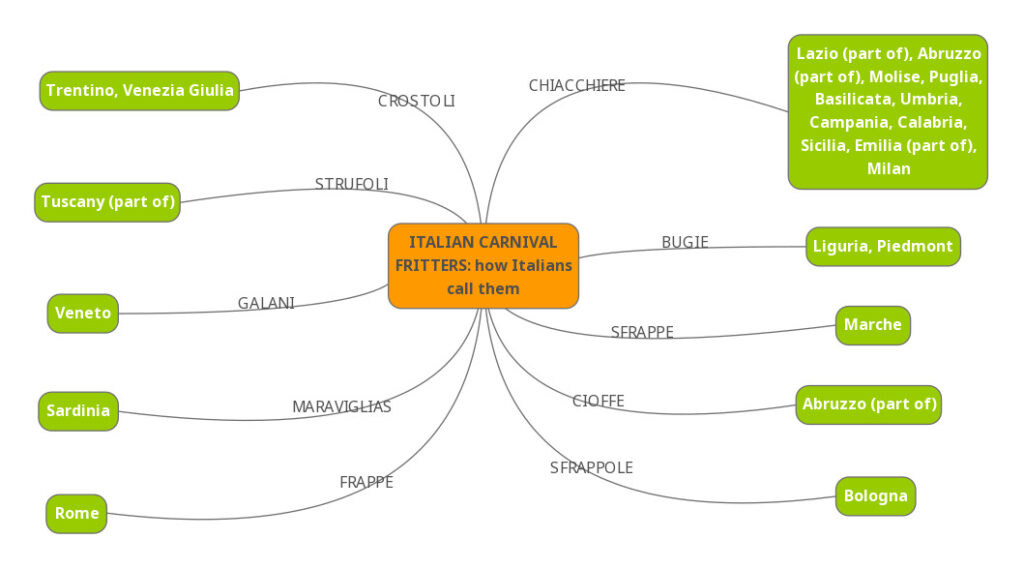
As you can see, the most common name for this kind of fritters is chiacchiere, an Italian word that can be translated as chats. According to a legend, this name dates back to Regina Margherita di Savoia, Queen consort of Italy at the turn of the XIX and XX centuries. She asked her cook, Mr. Raffaele Esposito, something sweet to eat while chatting with her guests, and Raffaele created this fried delicatessen, named after Her Majesty’s chats!
Fun fact: also the most famous pizza, pizza Margherita, owns its name to this same Queen.
Italian Carnival fritters tradition
Carnival fritters are a tradition that roots back in the ancient Rome period. At that time, sweets named frictilia (in Latin) were very common during the Saturnalia season, the ancient Carnival festive period dedicated to Saturn, which took place during February. Frictilia were very easy, were prepared in huge amounts and ancient Roman used to eat them covered with honey or sanguinaccio, a sort of pudding made with pig’s blood.
Since Roman Empire, Carnival fritters are a tradition of heavy, fat food, before starvation typical of Lent time.
Traditions are created when every generation teaches the next one how things should be done. My mom taught me how to make her amazing sfrappole (yes, being from Bologna to me they are sfrappole 🙂 ) and now I want to share with you her secrets. I hope your children will love them as much as my daughter does! As you can see from the pictures, I am still using her tortellini (or ravioli) wheel. It’s an almost 70-years old tool, that I will pass to my daughter when she will leave our house. But I am glad to share with you that you can buy its contemporary version… love that the two of them look almost absolutely identical ^ ^:
Italian Carnival fritters
Equipment
- A bowl, or a stand mixer
- a rolling pin, or a pasta maker
- a knife
- a pan
- absorbent paper
- a strainer
Ingredients
- 350 gr 00 flour
- 2 eggs
- 1 orange
- 3 tbsp cognac
- 15 gr butter or lard
- 1 pinch salt
- 1 tbsp sugar
- 1 tbsp icing sugar
- q.s. peanut oil to fry
- q.s. icing sugar for the topping
Instructions
- Put all the ingredients in a bowl and, using a fork, mix them. Alternatively, you can use a stand mixer (like mine).

- The result should be a quite sticky dough, rather wet, with a wonderful smell (orange and cognac responsible for that). Make it rest for about 1 hour in the bowl, covered with a plastic film.

- Cut the dough into 4-5 smaller pieces and roll out each of them with a rolling pin (or a pasta machine). Use some flour to avoid it to stick to the rolling pin or to the chopping board. The resulting sheet should very thin.

- Using a knife, or the traditional tool to cut pasta sheets (also used for tarts), cut them into rectangular shapes, with two cuts each (see the picture).

- Using vegetable oil (I prefer peanut one), fry 3-4 of them at once. It should take about 30 seconds for each side. Then remove them to a layer of absorbent paper.

- When the oil is drained, but the fritters are still warm, spray them with the icing sugar… and enjoy! They are very good both warm and ambient temperature.

Notes
- when you roll out the dough, since it is quite wet, use a bit of flour to avoid the rolling pin to stick
- fold the dough a couple of time when you roll it. This (similar to what happens when you make bread) will allow some air to be trapped in the sheet of dough and will eventually create the bubbles while frying
- the perfect oil temperature is 170 °C. You don’t want the fritters to burn
- cook very few fritters at once for better results
- spray the fritters with icing sugar when they are still warm, you want the sugar to stick
- keep them for a few days at ambient temperature. But I don’t think they will last 😉
Disclosure
Some of the links above are affiliate links. This means that, at no additional cost to you, if you click through and make a purchase you will help this blog grow. I only promote affiliate programs that I believe in, and products I know about, with the aim to help you in your choices.
Buon appetito!

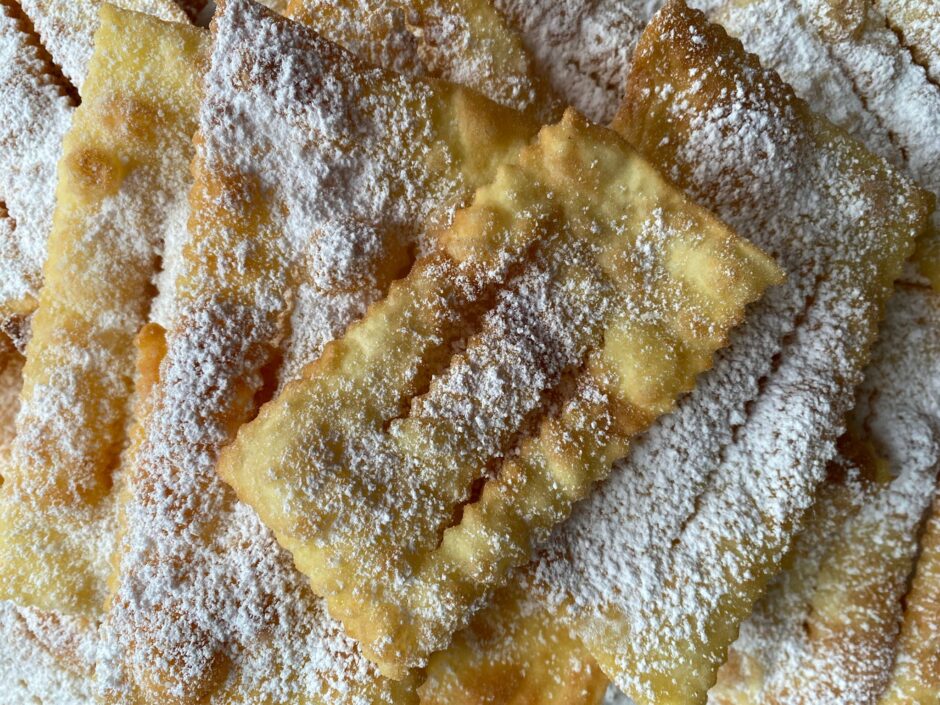

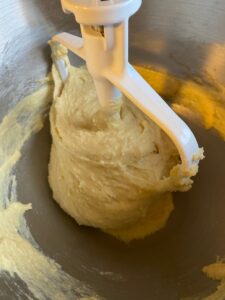
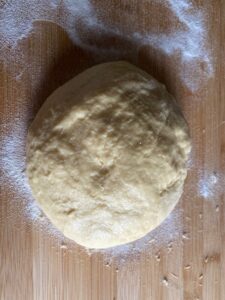
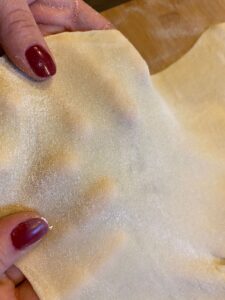
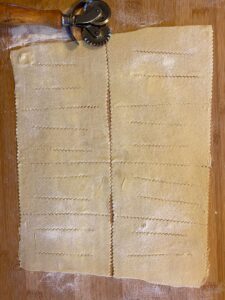
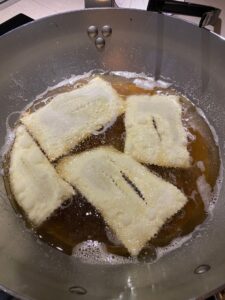
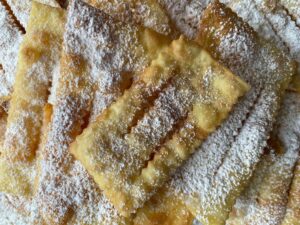
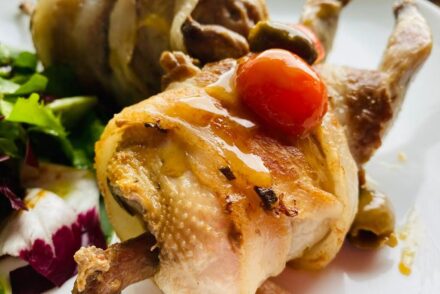
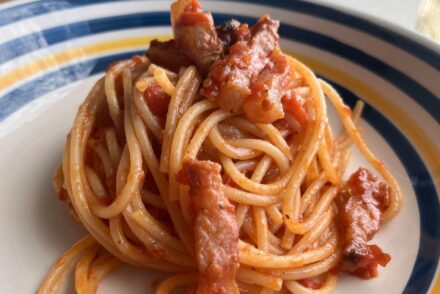
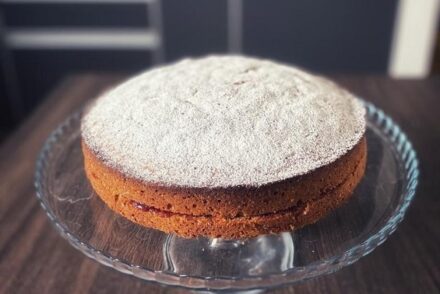
No Comments